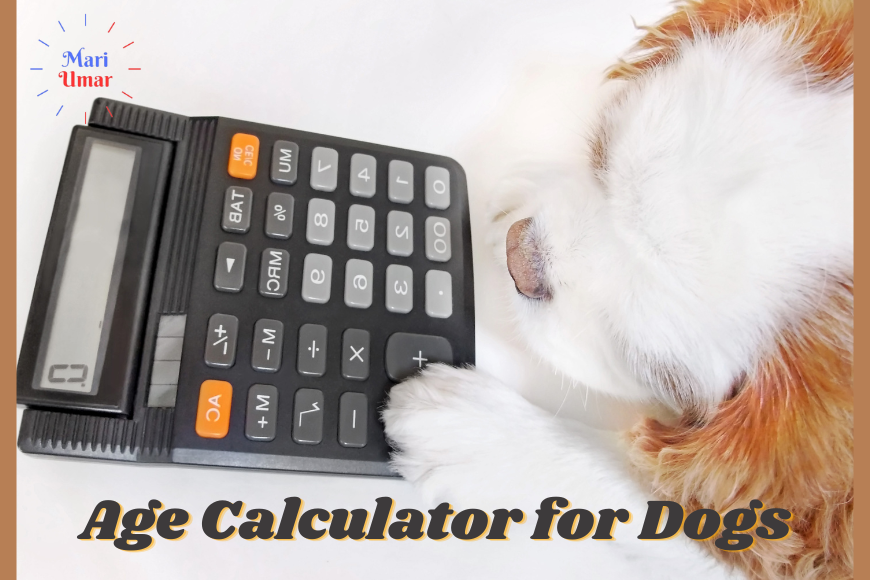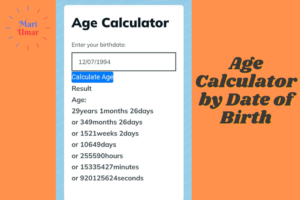Did you know that a 2-year-old dog is roughly equivalent to a 24-year-old human? As a devoted dog owner, I know how important it is to understand our furry friends’ aging process. That’s why I’ve created this comprehensive dog age calculator to help you determine your pup’s equivalent age in human years. Whether you have a puppy or an older dog, this tool will provide you with valuable insights into your dog’s life stage and health needs. Let’s dive in and uncover the mystery of dog years together!
Key Takeaways
- A 2-year-old dog is roughly equivalent to a 24-year-old human.
- This dog age calculator helps you determine your pup’s age in human years.
- Understanding your dog’s life stage is crucial for providing the best care.
- The tool covers puppies and older dogs, offering insights into their health needs.
- Exploring the mystery of dog years can help you better care for your furry friend.
Understanding Dog Years: Uncovering the Mystery
Understanding the concept of “dog years” is crucial when it comes to accurately assessing your pet’s age and development. Contrary to the popular belief that one dog year equals seven human years, the actual conversion rate can vary significantly depending on your dog’s size, breed, and other factors. In this section, we’ll explore the true nature of dog years and debunk the common misconception of the 7-year rule. By the end, you’ll have a deeper understanding of how to properly calculate your dog’s age and its human equivalent.
What Are Dog Years?
The term “dog years” is used to describe the aging process of our canine companions. It’s commonly believed that one dog year is equivalent to seven human years, but this simplistic formula doesn’t accurately reflect the complex dynamics of dog aging. Dog years refer to the rate at which dogs age compared to humans, and this rate can fluctuate based on a variety of factors.

The Myth of the 7-Year Rule
The notion that one dog year equals seven human years is a widespread misconception that fails to capture the nuances of dog year to human year conversion. While this rule may provide a rough estimate, it doesn’t account for the fact that a dog’s aging process is not linear. Smaller breeds, for instance, tend to age more slowly than larger breeds, and the how to calculate dog years for each dog can vary significantly. By understanding the true nature of dog age in human years, you can better cater to your furry friend’s needs and ensure they receive the appropriate care and attention at every stage of their life.
age calculator for dogs
Our dog age calculator takes into account multiple factors that influence a dog’s aging process. From their size and breed to their overall health and lifestyle, these elements play a critical role in determining how quickly our canine companions progress through the stages of life. Understanding these factors that affect dog aging is key to ensuring that you provide your dog with the appropriate care, nutrition, and veterinary attention at every stage of their development.
Factors Affecting a Dog’s Aging Process
The dog age calculator we’ve developed considers a variety of factors that can impact your dog’s lifespan and aging trajectory. These include:
- Breed and size: Larger breeds tend to have shorter lifespans compared to smaller dogs.
- Overall health: Maintaining your dog’s physical and mental well-being through proper diet, exercise, and veterinary care can significantly influence their longevity.
- Lifestyle: An active, enriched lifestyle with minimal stress can slow the aging process for our furry friends.
- Genetics: Some dogs may inherit genetic factors that predispose them to certain health conditions, affecting their age progression.
Why Accurate Age Calculation Matters
Determining your dog’s accurate age in human years is crucial for their overall well-being. By understanding the importance of accurate dog age calculation, you can make informed decisions about your pet’s healthcare, nutrition, and daily needs. This knowledge helps you:
- Provide age-appropriate care and preventive measures: Knowing your dog’s exact life stage allows you to tailor their diet, exercise regimen, and veterinary checkups to their specific needs.
- Anticipate and address health concerns: Accurate age calculation helps you stay vigilant for age-related issues and proactively manage your dog’s well-being.
- Enhance the quality of your dog’s life: With a clear understanding of your dog’s age, you can ensure they receive the right support and attention to live a long, healthy, and fulfilling life.
By leveraging our comprehensive dog age calculator, you can uncover the mysteries of your pup’s aging process and take the necessary steps to give them the best possible care throughout their lifetime.
Calculating Your Dog’s Age: A Simple Guide
Determining your dog’s age can seem like a complex task, but with our easy-to-use guide, you’ll be able to calculate your pup’s equivalent age in no time. The key to understanding the relationship between dog years and human years lies in recognizing the different rates of aging at various stages of a dog’s life.
The First Two Years: A Faster Pace
During the first two years of a dog’s life, their aging process happens at a much faster pace compared to humans. In fact, the first year of a dog’s life is equivalent to approximately 15 human years, and the second year is equivalent to around 9 human years. This rapid initial growth and development is a crucial factor to consider when how to calculate dog age and understand your dog’s life stage.
Beyond Two Years: A Slower Progression
After the first two years, the progression of dog years to human years slows down significantly. From this point forward, each additional year of a dog’s life is roughly equivalent to 4-5 human years, depending on the size and breed of the dog. By using this dog age calculator and understanding the dog age conversion process, you can gain a more accurate picture of your canine companion’s age and provide them with the appropriate care and attention throughout their lifetime.
| Dog Age (Years) | Equivalent Human Age (Years) |
|---|---|
| 1 | 15 |
| 2 | 24 |
| 3 | 28 |
| 4 | 32 |
| 5 | 36 |
| 6 | 40 |
| 7 | 44 |
| 8 | 48 |
| 9 | 52 |
| 10 | 56 |
Breed-Specific Age Calculators
While our age calculator for dogs provides a general guideline, the reality is that different dog breeds age at varying rates. Factors such as size, genetics, and even temperament can significantly impact a dog’s lifespan and the corresponding human age equivalents. In this section, we’ll introduce breed-specific dog age calculators that take these unique characteristics into account, helping you gain a more accurate understanding of your dog’s life stage and specific needs.
Why Breed Matters in Age Calculation
The dog breed and age are closely intertwined, as a dog’s genetic makeup and physical attributes directly influence how how dog breed affects age calculation. For instance, larger dog breeds, such as Great Danes and Saint Bernards, generally have a shorter lifespan compared to smaller breeds like Chihuahuas and Yorkies. This is primarily due to the rapid growth and development experienced by larger dogs, which can put a strain on their bodies over time.
On the other hand, smaller dog breeds often live longer, with some toy breeds reaching the human equivalent of their 80s or 90s. By utilizing breed-specific breed-specific dog age calculators, you can gain a more precise understanding of your dog’s age and tailor their care accordingly, ensuring they receive the appropriate nutrition, exercise, and veterinary attention for their unique needs.
| Dog Breed | Average Lifespan (Human Years) | Factors Affecting Aging |
|---|---|---|
| Chihuahua | 12-20 years | Small size, fast metabolism, hardy constitution |
| Golden Retriever | 10-12 years | Larger size, susceptibility to certain health conditions |
| German Shepherd | 9-13 years | Medium-large size, prone to joint and hip issues |
| Poodle | 12-15 years | Moderate size, low-shedding coat, intelligent and active |
| Bulldog | 8-10 years | Brachycephalic (short-faced) breed, respiratory challenges |
Signs of Aging in Dogs
As our canine companions grow older, it’s crucial to be attentive to the telltale signs of aging. These indicators can provide valuable insights into your dog’s well-being, allowing you to proactively address their evolving needs and ensure they enjoy a comfortable and fulfilling golden years.
Physical Changes to Watch For
As dogs age, they may start to exhibit physical changes that are characteristic of the aging process. Keep an eye out for signs like joint stiffness, decreased vision, and hearing loss. These changes can be gradual, but it’s important to monitor them closely and consult your veterinarian for appropriate treatment and management strategies.

Behavioral Shifts and Mental Alertness
In addition to physical changes, aging dogs may also experience behavioral and cognitive shifts. You may notice your furry friend becoming less active, sleeping more, or exhibiting changes in their sleep-wake cycle. Decreased mental alertness and memory lapses are also common signs of aging in dogs. Being attuned to these behavioral and cognitive changes can help you identify potential issues and ensure your dog receives the necessary support and care.
By staying vigilant and recognizing the signs of aging in dogs, you can proactively address your pet’s needs and help them enjoy a comfortable and fulfilling later stage of life. Remember, every dog is unique, and the aging process can vary, so it’s essential to work closely with your veterinarian to develop a tailored plan that caters to your canine companion’s individual needs.
FAQ
What are dog years?
As a devoted dog owner, I know the importance of understanding our furry friends’ aging process. “Dog years” refer to the concept that one year in a dog’s life is equivalent to a different number of years in a human’s life. This is a way to help pet owners better comprehend their dog’s life stage and health needs.
What is the myth of the 7-year rule?
Contrary to the popular belief that one dog year equals seven human years, the actual conversion rate can vary significantly depending on your dog’s size, breed, and other factors. The 7-year rule is a common misconception that doesn’t accurately represent the true nature of dog years.
What factors affect a dog’s aging process?
Our age calculator for dogs takes into account multiple factors that influence a dog’s aging process, such as their size, breed, overall health, and lifestyle. Understanding these elements is key to ensuring that you provide your dog with the appropriate care, nutrition, and veterinary attention at every stage of their development.
Why is accurate age calculation important for my dog?
Accurate age calculation is crucial for the well-being of your furry friend. By understanding your dog’s true age and corresponding life stage, you can make informed decisions about their healthcare, dietary needs, and activity levels to ensure they receive the best possible care throughout their lifetime.
How do I calculate my dog’s age?
Calculating your dog’s age can be a straightforward process. During the first two years of a dog’s life, their aging process happens at a much faster pace compared to humans. After this initial period, the progression of dog years to human years slows down, requiring a different calculation method. Our easy-to-use guide will walk you through the step-by-step process to determine your pup’s equivalent age.
How does a dog’s breed affect their age calculation?
While our age calculator for dogs provides a general guideline, the reality is that different dog breeds age at varying rates. Factors such as size, genetics, and even temperament can significantly impact a dog’s lifespan and the corresponding human age equivalents. Our breed-specific age calculators take these unique characteristics into account, helping you gain a more accurate understanding of your dog’s life stage and specific needs.
What are the signs of aging in dogs?
As our dogs grow older, it’s important to be vigilant in recognizing the signs of aging. From physical changes like joint stiffness and decreased vision to behavioral shifts and cognitive decline, these indicators can provide valuable insight into your dog’s well-being. By understanding the common signs of aging in dogs, you can proactively address your pet’s needs and ensure they enjoy a comfortable and fulfilling golden years.





